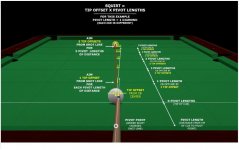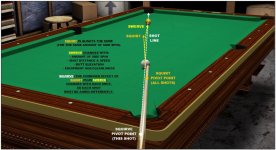Back in May of last year, when we launched the + shafts, we made a change in how we refer to the performance aspects of our shafts. We chose not to refer to them as Low Deflection. What we did do is to state that we have reduced the "Tip End Mass" by at least 13% for each of our models. We have plans to provide actual measured numbers for most or all performance shafts with LD claims or characteristics. We do realize that TEM isn't the only thing that affects cue ball squirt, but it is undoubtedly the biggest contributor and it's also something that can be easily quantified and documented. It appears that Predator has chosen this route as well with their newest -3 shafts claiming a 4% reduction in Tip End Mass.
I think it would be nice to get away from the term LD or low deflection. It leads to confusion and is often misunderstood. It's also become a buzz word that sometimes gets used to describe products that don't really do anything to reduce cue ball squirt.
Pivot points are a good measure, but they too can be confusing. And, to test them properly would require a robot or other mechanized stroking machine.
Royce

